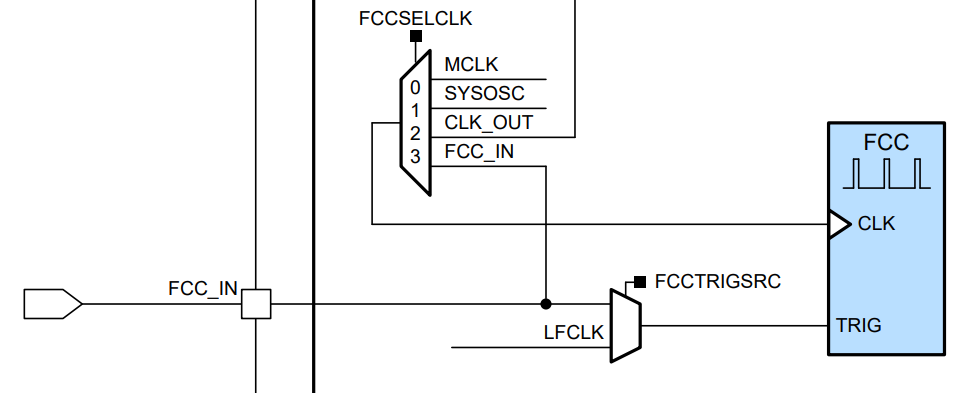SLAAE75A November 2022 – March 2023 MSPM0L1105 , MSPM0L1106 , MSPM0L1227 , MSPM0L1228 , MSPM0L1228-Q1 , MSPM0L1303 , MSPM0L1304 , MSPM0L1304-Q1 , MSPM0L1305 , MSPM0L1305-Q1 , MSPM0L1306 , MSPM0L1306-Q1 , MSPM0L1343 , MSPM0L1344 , MSPM0L1345 , MSPM0L1346 , MSPM0L2227 , MSPM0L2228 , MSPM0L2228-Q1
4.3 Frequency Clock Counter (FCC)
The frequency clock counter (FCC) enables flexible in-system testing and calibration of a variety of oscillators and clocks on the device. The FCC counts the number of clock periods seen on the selected source clock within a known fixed trigger period (derived from a secondary reference source) to provide an estimation of the frequency of the source clock.
 Figure 4-4 MSPM0L Series Frequency Clock Counter Block Diagram
Figure 4-4 MSPM0L Series Frequency Clock Counter Block DiagramApplication software can use the FCC to measure the frequency of the following oscillators and clocks:
- MCLK
- SYSOSC
- CLK_OUT
- The external FCC input (FCC_IN)